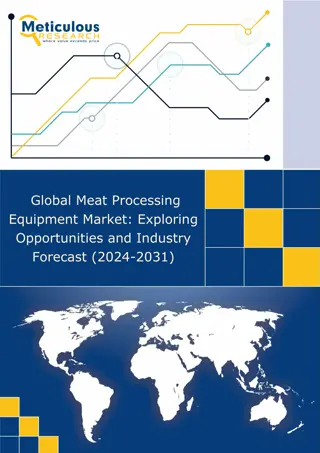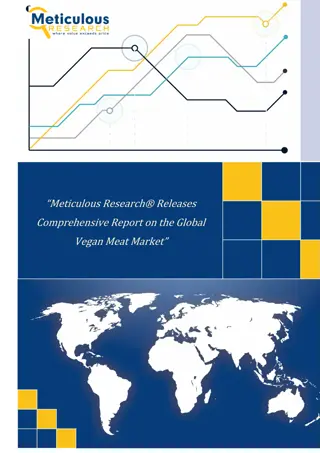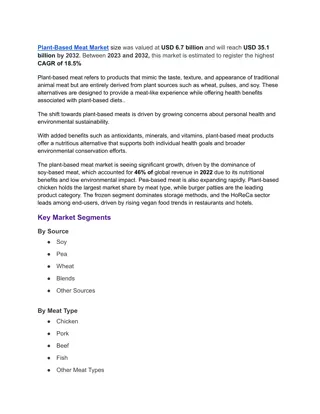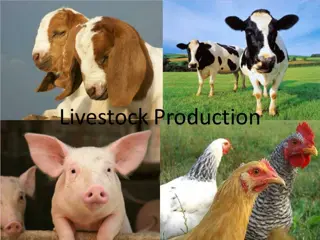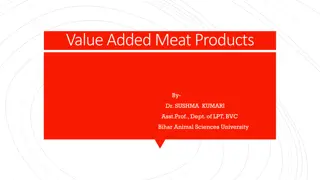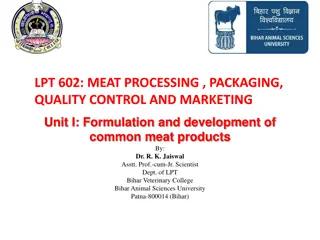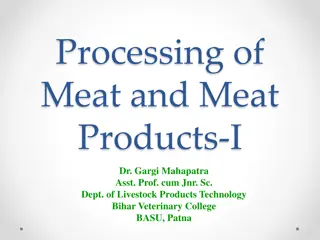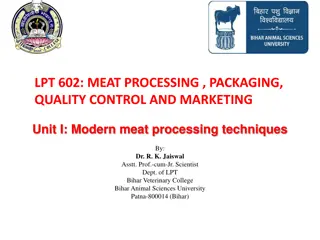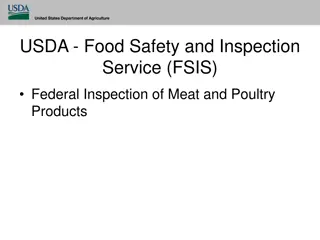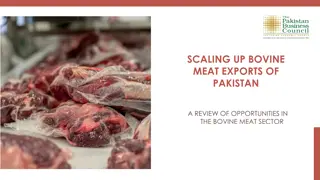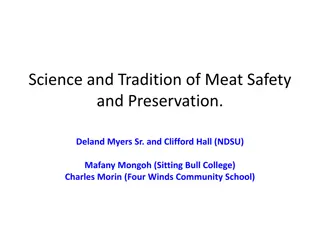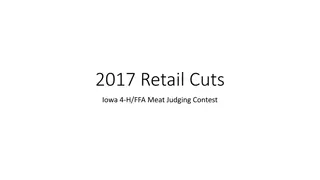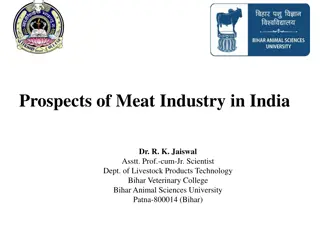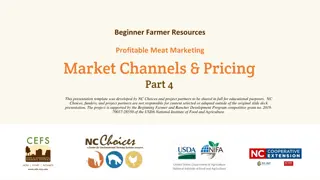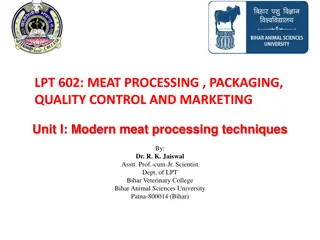Engineering a Sustainable Future for Meat Production
Scientists are developing innovative solutions to address the unsustainable demand for meat production. By growing lab-grown meat and creating meaty flavors from mushrooms, they aim to reduce energy consumption and land use, offering a promising alternative to traditional farming practices.
Download Presentation

Please find below an Image/Link to download the presentation.
The content on the website is provided AS IS for your information and personal use only. It may not be sold, licensed, or shared on other websites without obtaining consent from the author.If you encounter any issues during the download, it is possible that the publisher has removed the file from their server.
You are allowed to download the files provided on this website for personal or commercial use, subject to the condition that they are used lawfully. All files are the property of their respective owners.
The content on the website is provided AS IS for your information and personal use only. It may not be sold, licensed, or shared on other websites without obtaining consent from the author.
E N D
Presentation Transcript
Active 2 Unit 11- Chapter 1 Engineering a better burger : 1401-1402
Humans have traditionally been omnivores, with a diet of both meat and vegetables. But lately it seems we've become a society of meat eaters. According to the United Nation's Food and Agriculture Organization (FAO), global demand for meat has increased over 500 percent in the past 50 years. Two things explain this: the Earth's population is rising rapidly, and people with higher incomes tend to consume more meat. With the population expected to reach nine billion people around 2050, and with developing countries getting richer, this trend won't stop any time soon. .
If meat production rises to match demand, the consequences could be devastating for the planet. Thirty percent of Earth's entire land surface a massive 70 percent of all land available for agricultural use is used for raising livestock. And more land is required each year as farmers struggle to meet the rising demand, which comes at the cost of rain forests and other valuable lands. Reports by FAO show that meat production is responsible for 70 percent of the Amazon deforestation in South America. Large factory farms are also big consumers of energy and cause a lot of pollution. It's clear that our hunger for meat, and the way we produce it, is not sustainable in the long run. .
Fortunately, food scientists have peen anticipating this need for change. They are working on some interesting alternatives to current methods of meat production. A group of Dutch scientists are engineering meats that can be grown in laboratories. This involves using cells taken from cows to grow "muscle" that can be mixed with other things to make beef. They say that this process could reduce the amount of energy and land needed to raise cattle by about 40 percent. Other scientists from the United States and China are working to create "meaty" flavors from mushrooms, which could be used to flavor foods. They feel people can detect chemical flavors, and that natural flavors are better for the body. .
For now, lab-grown meat is not a threat to traditional farming. Although scientists say that their beef could be ready for testing (and eating) soon, large-scale manufacturing won't be possible for another ten years. It's far too expensive to develop in large quantities the Dutch team will spend over $200,000 making enough meat for one burger and not everyone will be keen on the idea of eating lab-grown meat. While the general public isn't quite ready to accept "fake" meat, the day will come when we may not have a choice. .



